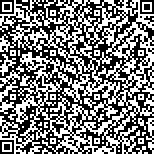刘开宏,郝洁倩.生物反馈电刺激联合盆底肌训练治疗女性盆底器官脱垂的疗效观察[J].中华物理医学与康复杂志,2017,39(9):694-697
扫码阅读全文

|
| 生物反馈电刺激联合盆底肌训练治疗女性盆底器官脱垂的疗效观察 |
| Biofeedback in pelvic floor muscle training for women with prolapsed pelvic organs |
| |
| DOI: |
| 中文关键词: 生物反馈 电刺激 康复训练 盆底器官脱垂 |
| 英文关键词: Biofeedback Electrical stimulation Pelvic organs Prolapse |
| 基金项目: |
|
| 摘要点击次数: 6620 |
| 全文下载次数: 8422 |
| 中文摘要: |
| 目的 探讨生物反馈电刺激联合盆底肌训练治疗盆底器官脱垂的临床疗效。 方法 用随机数字表法将符合纳入标准的60例盆底器官脱垂患者分为观察组和对照组,每组30例。2组均给予生物反馈电刺激治疗,观察组在此基础上增加凯格尔(Kegel)模板训练及配合盆底康复器(阴道哑铃)实施盆底功能训练。每周治疗3次,每次30min,15次为1个疗程,间隔2周,继续治疗第2个疗程,共治疗2个疗程。分别于治疗前和治疗2个疗程后(治疗后),用生物反馈评估测试仪对2组患者进行盆底肌电评估,并采用会阴肌力测试(GRRUG)法进行盆底肌力评定。 结果 治疗前,2组患者盆底肌在静息状态、快速收缩、耐力收缩阶段的电位平均振幅[观察组(7.9±1.0)、(19.0±13.5)和(13.6±9.8)μV;对照组(8.4±1.2)、(18.6±11.2)和(14.1±10.3)μV]比较,组间差异无统计学意义(P>0.05)。经2个疗程的治疗后,2组患者上述不同状态的盆底肌电位均较组内治疗前有明显改善(P<0.05),观察组盆底肌在静息状态、快速收缩和耐力收缩时的盆底肌电位分别为(2.6±0.2)、(43.7±13.6)和(32.5±11.3)μV,明显优于对照组治疗后[(5.3±0.4)、(33.4±10.5)和(24.2±10.1)μV],且组间差异有统计学意义(P<0.05);2组患者盆底肌力比较,观察组患者盆底肌力达Ⅴ级有23例,显著高于对照组(9例),且差异有统计学意义(P<0.05);2组患者临床疗效比较,观察组患者总有效率96.7%,显著高于对照组(73.3%),差异有统计学意义(P<0.05)。 结论 生物反馈电刺激联合盆底肌训练治疗女性盆底器官脱垂效果显著。 |
| 英文摘要: |
| Objective To explore the curative effect of biofeedback-controlled electrical stimulation combined with the pelvic floor muscle training among women with prolapsed pelvic organs. Methods Sixty women with pelvic organ prolapse were divided at random into an observation group and a control group, each of 30. Both groups were given biofeedback-controlled electrical stimulation of the vaginal muscles, but the observation group also received Kegel training and pelvic floor function training using a vaginal dumbbell. The intervention consisted of 2 courses with an interval of 2 weeks. One course met 15 times, 3 times a week, lasting 30 minutes each time. Before and after the treatment, both groups were assessed using pelvic floor electromyography and the GRRUG method was used to evaluate their pelvic floor muscle strength. Results Before the treatment, there were no significant differences between the observation and control groups in terms of the average amplitude of the potentials generated by the pelvic floor muscles in resting, in rapid contraction or in endurance contraction. After the treatment the observation group generated significantly higher potentials than the control group on average. The pelvic floor muscle strength of the observation group reached level V in 23 cases, significantly more than the 9 cases observed in the control group. The total effectiveness rate of the observation group was 96.7%, significantly higher than the control group′s 73.3%. Conclusion Biofeedback-controlled electrical stimulation combined with pelvic floor muscle training is effective in treating females with pelvic organ prolapse. |
|
查看全文
查看/发表评论 下载PDF阅读器 |
| 关闭 |